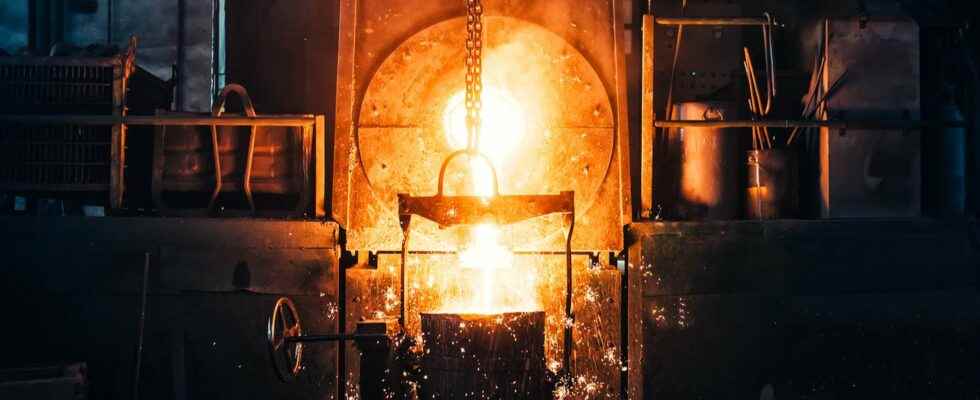If they are sometimes confused, iron, cast iron and steel are indeed three distinct materials. The first actually enters into the composition of the other two.
You will also be interested
Iron is a chemical element with the symbol Fe. It is a metal running, white, hard and malleable.
Iron, an abundant chemical element
the iron constitutes a large part of earth core and, in fact, mass of our planet. In the Earth’s crustit is mainly found in the form of oxides such as hematite (Fe2O3) or the magnetite (Fe3O4). Men learned to work it around the XIIe century BC. J.-C., precisely marking the beginning of iron age.
Cast iron, a carbon-rich iron alloy
In industry, iron is rarely used in its pure state. It enters into the composition of several alloys, one of the main ones being melting. This alloy is composed of iron and carbon from 2% to 6.67%. When in the meltingthe carbon is in the form of lamellae of graphite, we speak of gray cast iron.
Contrary to popular belief, cast iron is not heavier than iron. She presents a Volumic mass between 6,800 and 7,400 kilograms per cubic meter while iron is at 7,860 kilograms per cubic meter. Cast iron is no heavier thansteel either — of which it can be a precursor — with a density very close to that of iron.
Steel, an iron-carbon alloy
Steel is the other main alloy of iron. It also includes a share of carbon: between 0.02% and 2% of the total mass of the piece ofsteel. When tempered, steel becomes even harder than iron. It takes most of its properties from its carbon content. When this increases, the hardness of the alloy improves and its elongation at break decreases. Adding other elements, such as chromium where the nickelalso allows you to modify the physical properties steel.
Interested in what you just read?
